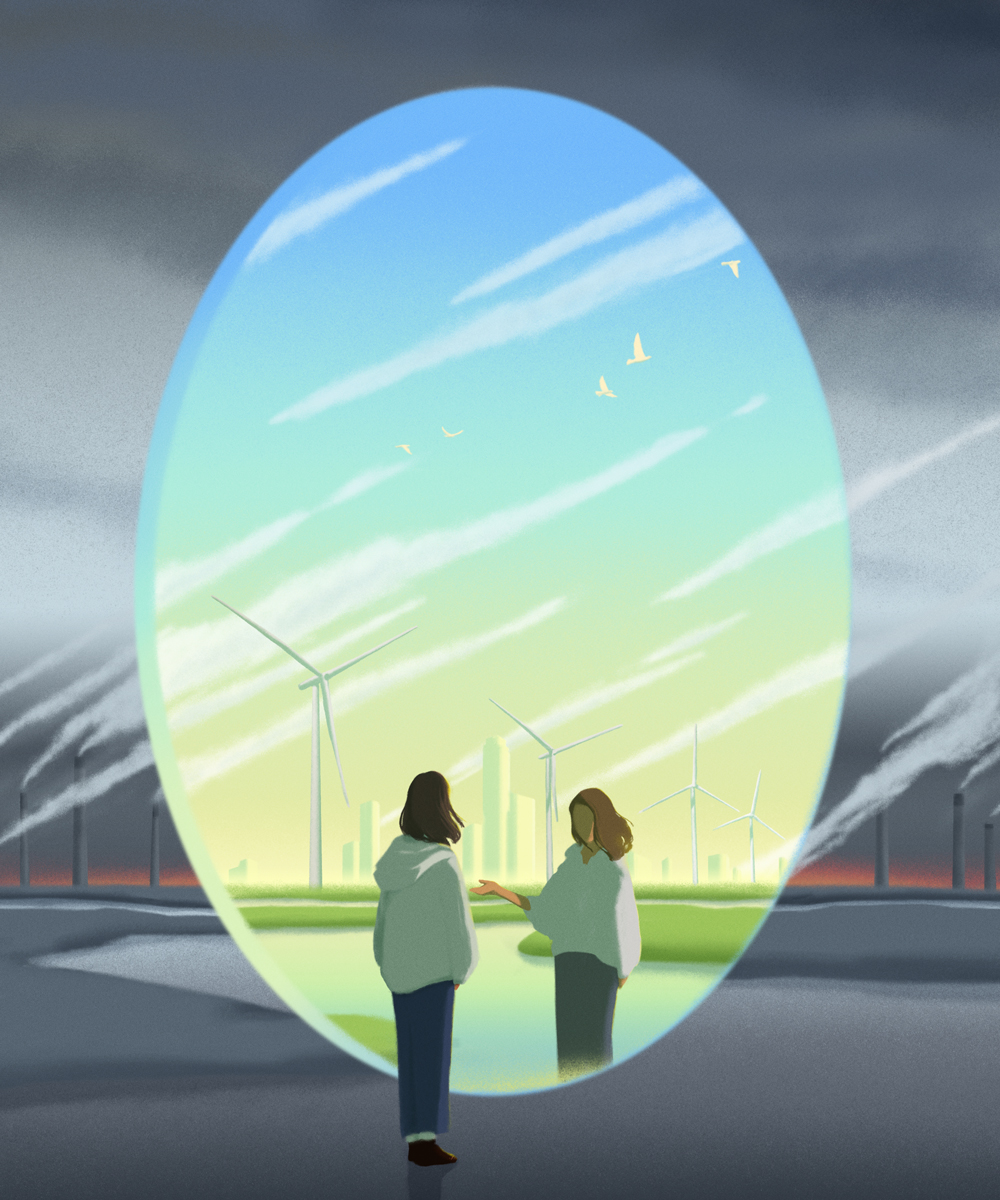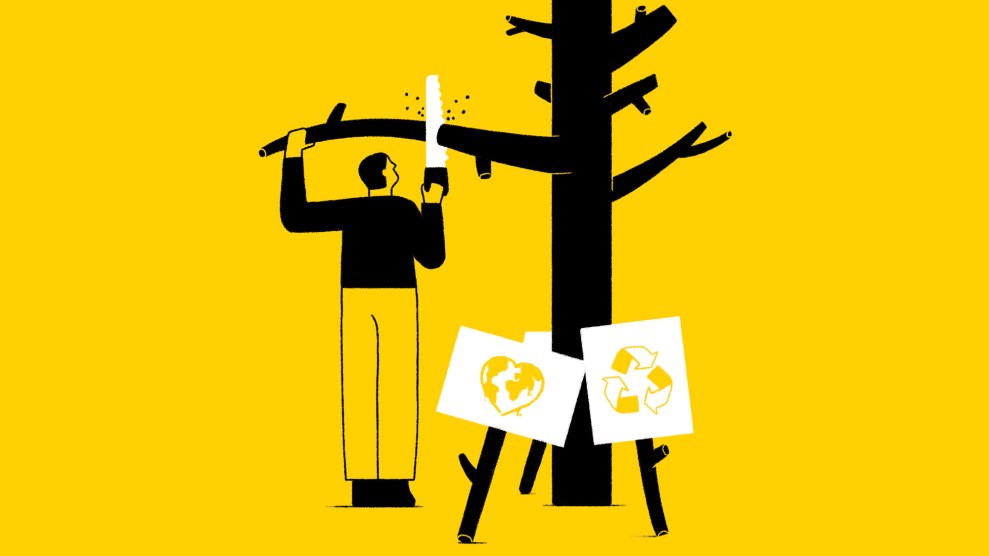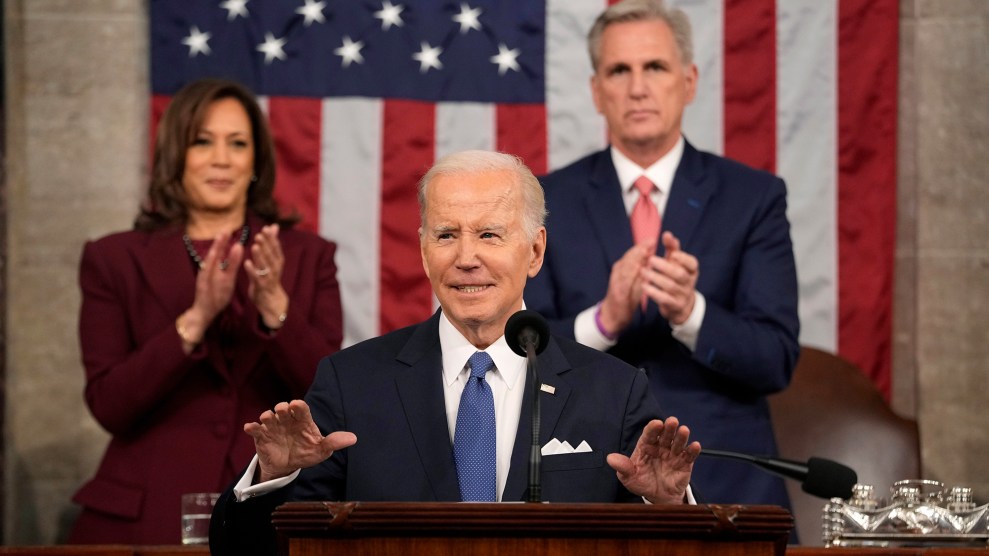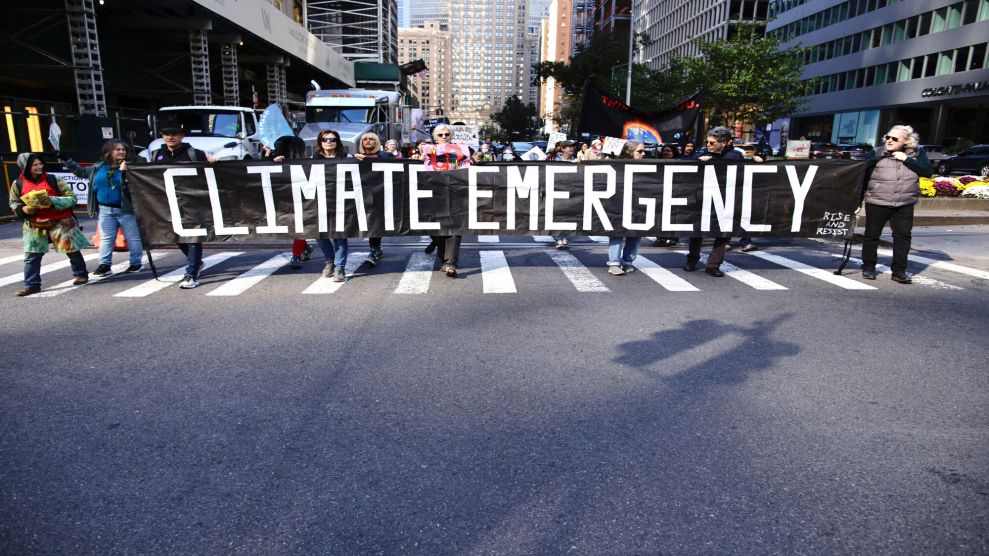The United States is on the brink of its most consequential transformation since the New Deal. Read more about what it takes to decarbonize the economy, and what stands in the way, here.
I’m an environmentalist, which means I’ve got some practice in saying no. It’s what we do: John Muir saying no to the destruction of Yosemite helped kick off environmentalism; Rachel Carson said no to DDT; the Sierra Club said no to the damming of the Grand Canyon. We’re often quite good at it, and thank heaven; I’ll go to my grave satisfied by, if nothing else, having played some part in stopping Big Oil from building the Keystone XL pipeline 1,700 miles across the heart of the continent. Right now I’m deeply engaged with American colleagues in trying to stop our big banks from funding fossil fuel expansion, and rooting on friends in Africa as they battle the giant EACOP pipeline, and watching with admiration as European confreres fight plans to expand coal mines at the expense of forests and villages. In a world where giant corporations, and the governments they too often control, ceaselessly do dangerous and unnecessary things, saying no is a valuable survival skill for civilizations.
For more articles read aloud: download the Audm iPhone app.
But we’re at a hinge moment now, when solving our biggest problems—environmental but also social—means we need to say yes to some things: solar panels and wind turbines and factories to make batteries and mines to extract lithium. And new affordable housing that will make cities denser and more efficient while cutting the ruinous price of housing. And—well, it’s a long list. And in every case there are both benefits and costs, all played out in particular places with particular histories. But what interests me is the search for some general principles that might make these disputes easier, at least for people of good will. I’m thinking of people like me: older white people, a class particularly used to working the system, and perhaps psychologically tilted toward keeping things the way they are.
Is there some way to calculate when the balance tips one way or the other? Some way to figure out when we should protest change and when we should just be quiet?
Let me start the search for such a rule by telling two stories about one place. I lived most of my life deep in rural America, and much of it in a red, hardscrabble, and very beautiful pocket of upstate New York, the southeastern Adirondacks. You can get a quick sense of its culture by knowing that it’s represented in Congress by Elise Stefanik, though as always, it’s more complicated than that.
First story. Three decades ago, in the early 1990s, our county decided it wanted to build a vast new landfill. Even though our tiny town was 30 miles from the city where almost all the waste was generated (Glens Falls, home to big paper mills), county officials chose a site in our remote township of Johnsburg, under the mountain where we lived, knowing we weren’t likely to fight back—because we were poor, and few in number, and would probably just decide there was no use. But we did fight back. We organized meetings, held bake sales, had the kindergarten class draw pictures of the mountain. One local musician penned a good lyric:
They make the garbage in the south
And truck it to the north.
The workingman pays the tax
To ship it back and forth.
At the climactic meeting of the regional planning board, the Reverend Daisy Allen, longtime local preacher, rose and told the story of weak and whiny King Ahab, who, on the advice of evil Queen Jezebel, took a vineyard he coveted from a man named Naboth, by having him murdered to acquire the deed. “And he went to take possession,” Daisy said, staring at the planning board. “But God spoke through his prophets and said ‘Where Naboth’s blood has been licked by dogs, so will yours be licked.’” And then she sat down. And then we won.
As it turned out, and as we suspected, the landfill was entirely unnecessary; it was a corrupt scheme sold to the county board by consultants who, it turned out, once we’d defeated their grand plan, had also sold a landfill to the county next door, and they were desperately happy to rent some of it to us. Our mountain remained mostly untroubled.
A little more than a decade later, another plan arose. There’s a played-out garnet mine in Johnsburg, at the top of a hill on the edge of a vast state wilderness. And the owners of the mine wanted to put up 10 big wind turbines to generate clean power—this was in 2005, and it would have been one of the first big such developments in New York state.
In many ways it was the perfect site: There was already a road up the mountain, it had a big power line, and it was zoned industrial. But the turbines were indeed big—they would have been clearly visible even from deep in that very wild wilderness area. I knew those woods as well as anyone—I’d skied and hiked and paddled there for many years, I knew where the bear and coyote and martens lived. I’d found lost hikers deep in its trackless reaches, and I’d found much of my own love of wild places out there too. It meant as much to me as any place on Earth.
Most local people were okay with the plan—it would have created some jobs, and they were already worried about global warming; I had a neighbor who printed up buttons that just said “In My Backyard.” But the region’s biggest environmental group, supported mainly by people who lived at a distance and vacationed here, was opposed, on aesthetic grounds. The sight of those turbines would degrade the wilderness, they thought. They also, of course, came up with a bunch of spurious arguments—at one hearing their representative argued that in a big storm the turbines might spin right off their support towers and then roll down the mountainside several miles and crash into the school. Which is not how wind turbines work.
It forced me to think more deeply than I had before. All things being equal, I’d just as soon not have to look up at those towers when I scaled some wilderness peak. But all things, I knew, weren’t equal. Having written the first mainstream book on what we then called the greenhouse effect, I understood that the far deeper threat to this forest was that if we didn’t quickly stop burning fossil fuels, then there wouldn’t be a real winter to den up the animals; that if it kept warming, the birch and beech and maple that blazed red and yellow and orange in the early autumn would be replaced, at best, by drab hickory and elm. That the challenge to the character of the place I loved came from not building these wind turbines.
I wrote a piece for the New York Times saying just that, and earned in the process the enmity of some of the region’s professional environmentalists (and they won the fight; there are no wind turbines). But it felt as if I’d been true to the place by saying no to one plan, and yes to another. The dump was just a stupid idea; the wind turbines, though they came with drawbacks, were a necessary one.
Right now we’re at a moment when we need to build in a way we haven’t for quite a while, maybe since the days of the New Deal and the Second World War. The consensus among scientists and engineers who study this stuff is that we need to replace about a billion machines in America alone—regular cars with EVs or e-bikes, furnaces with heat pumps. And to run them on clean power, we need to build out lots of solar panels and wind farms and battery arrays. The factories to churn these things out are going up fast, in response to the incentives in the Inflation Reduction Act. But once this stuff has emerged from the factory, it needs to go in someone’s basement, someone’s kitchen, someone’s…backyard. Transmission lines have to cross fields; railroad tracks need to be built through rights of way. Some NIMBY passion will need to be replaced by some YIMBY enthusiasm—or at least some acquiescence.
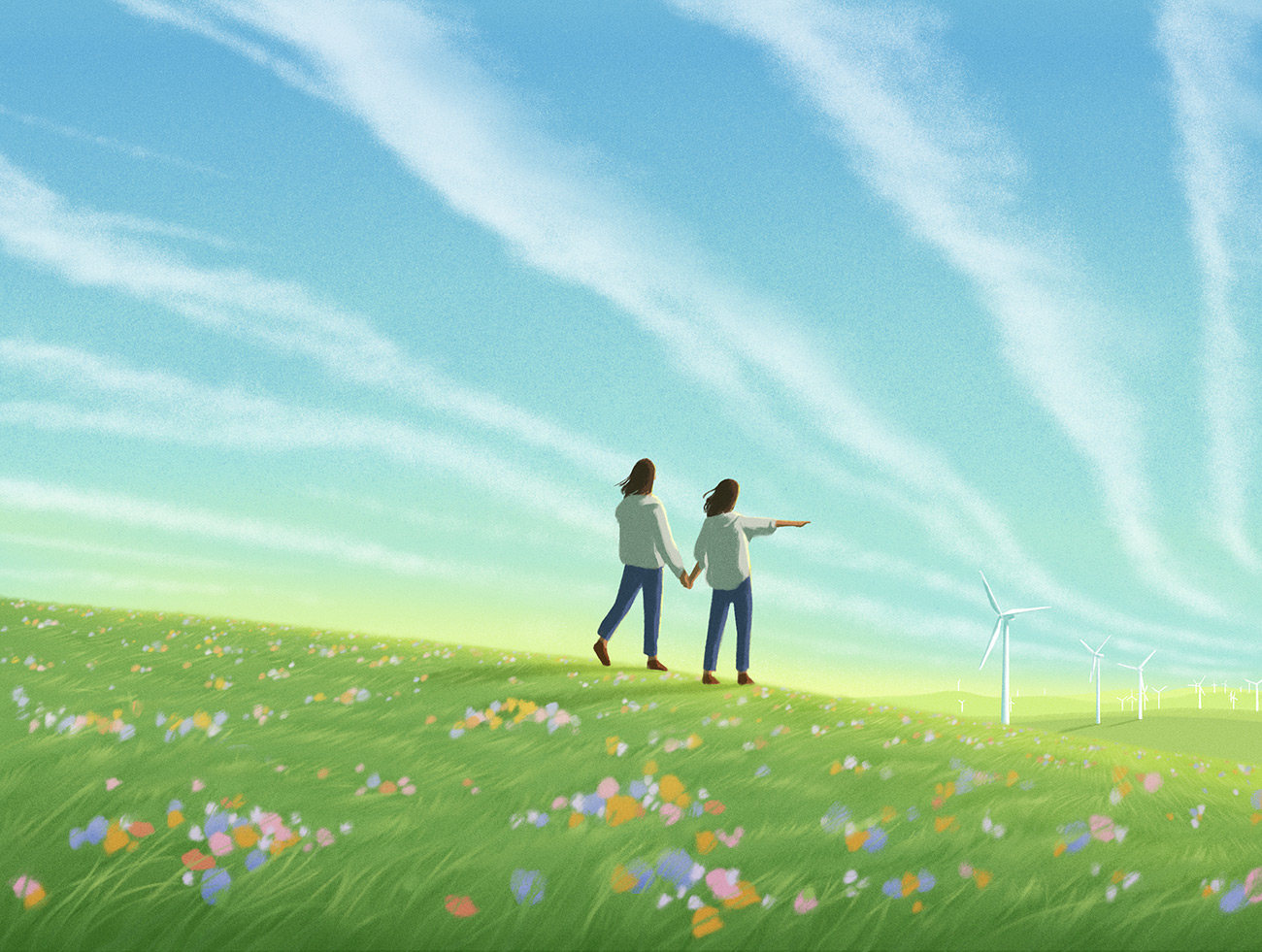
So how do we decide where to put up a fight, and where to let the future proceed? It’s quite possible that situational and instinctual reactions are the best we’re going to ever do with such questions. But what follows are a few thoughts in search of a more general principle. And they derive from what I think is the most bottom line of bottom lines for this century: We are in an unprecedented and dire emergency, with the planet’s temperature increasing quickly and dangerously; if we can’t bring it under control, then it poses an existential risk to poor and vulnerable people around the planet, and then to everyone else—not to mention most of the other species, and all the generations that come after us. This is not some alarmist screed—it’s the official policy of virtually every country on Earth, as enunciated in the Paris climate accord, but governments of course apply it haphazardly at best, still subsidizing fossil fuels even as—with instruments like the Inflation Reduction Act—they try to spur new clean energy developments, or with laws like California’s SB 9 they try to create denser, more efficient cities.
So there’s one general rule you could derive: If something makes climate change worse, then we shouldn’t do it. That’s the logic that Barack Obama used when he finally rejected the Keystone XL pipeline: “America is now a global leader when it comes to taking serious action to fight climate change. And frankly, approving this project would have undercut that global leadership.” It’s the rule that Joe Biden ignored this winter, when his administration approved the Willow Project, a massive new oil development in the Alaskan wilderness.
But if that rule helps you decide when to say no, it’s a little less effective when figuring out the times to say yes. Here are a few frameworks that have helped me as I’ve tried to sort this out.
1) We don’t live only in our backyard; we also share one.
It’s utterly fine to protect your own community, your own neighborhood. If you don’t do it, no one else will.
But we don’t just live in a community; we also live on a planet where carbon crosses jurisdictional boundaries shortly after we spew it into the air. And so protecting one’s backyard from any change has to be balanced against the cost it will impose on the larger whole. Imagine a community considering a new wind turbine or solar farm, or thinking about denser housing along transit corridors. These are the cheapest ways to cut carbon, and if we don’t build lots and lots and lots of projects like this, then we won’t be able to keep the temperature from climbing dramatically. And that in turn means utterly destroying some other backyard, indeed destroying all our backyards. This is not merely a possibility; it’s a certainty, the stuff of daily headlines. For instance, because warm air holds more water than cold, we have bigger rainfalls than we’ve ever seen before. Last autumn Pakistan saw what may have been the greatest deluge since Noah, and tens of millions of people were affected. Mud houses simply melted away. Maybe you don’t want to look at a solar panel, but no one wants to look at the scenes from that hideous flood, or contemplate a similar calamity befalling your own community. So the benefit of the doubt goes to saying yes, especially when you recollect that the damage from runaway global warming isn’t confined to some faraway place with poor people you’ll never meet. Their plight should be enough to make the moral case—but if it isn’t, by this point we know that it’s our own places at risk as well. California used to be the world’s ideal—the Golden State. Now it’s increasingly a cautionary tale, of the wildfires that break out when you don’t control the temperature, of “bomb cyclones” that dump a year’s worth of rainfall in a month, and of the homeless camps that inevitably arise when the only houses still available are too expensive for most people to afford. And if the fate of California or Florida or Texas doesn’t worry you that much—if you think that it’s “their fault for living along the Gulf,” rest assured that climate change (not to mention the migration it sets off) will bring upheaval everywhere.
2) We don’t live only in our own moment—we’re accountable for past behavior.
All of us focus on the present and the future, but sometimes that’s a way of avoiding accountability for the past; replacing your gas furnace with an electric heat pump is a wonderful step, but it doesn’t magically erase all the carbon that poured out of that furnace over the decades, carbon that produces a very real debt. Every corner of America has poured huge amounts of carbon into the atmosphere, over several generations. The United States, which now makes up 4 percent of the world’s population, has put 25 percent of the entire world’s CO2 into the atmosphere, which continues to do damage: The carbon from the tailpipe of my family’s Plymouth Fury when I was practicing for my driver’s license in the 1980s is up there still.
We don’t get to pretend that isn’t relevant—that we (and especially the affluent “we” of the American suburbs) haven’t built up a carbon debt that will be paid by people of future generations, a debt that in fact is being paid right now by the people watching as their homes disappear in forest fires, or the Atlantic floods their streets at every storm. In the same way, we know—or should know—that a big reason some places are leafy suburbs and some places are not is because the government helped “redline” communities nearly a century ago, with effects that are still playing out. (A crazy fact: The neighborhoods that the government graded D back in the 1930s, essentially setting them off limits to investment, are now 5 or 10 degrees hotter than the places that the government graded A.) That’s our history—and if we fight to keep affordable housing out of our communities, we deny the reality of that history.
Again, I think, the benefit of any doubt goes squarely to saying yes. But it’s important to remember that history cuts both ways, of course: Proposing new developments on, say, land that’s all that Native Americans have left of the continent they once possessed should warrant a much harder look; ditto for Black and Latino communities that have been systematically stuck with everything others don’t want. If Indigenous groups don’t want a lithium mine on sacred territory in Nevada, that’s a reasonable argument; repeating the mistakes of our history at this point is truly unforgivable. And of course all this is complicated by the fact that if we can’t make a quick energy transition, then the impact of that will be felt most by the poorest; when we think about coastal flooding, we should think less about Miami Beach and more about the low-lying deltas of Asia—the Mekong, the Brahmaputra. They could be wiped out by rising tides, but they lack political power, and hence we don’t pay them much attention.
In general, more Americans have been winners than losers from our history, at least in global terms; if we fall into that category, that should temper our defensiveness.
3) Idealism involves realism.
Sometimes figuring this one out is easy, because sometimes idealism is fake. If someone who has never worked on affordable housing suddenly opposes a new development because it’s not 100 percent affordable, then that’s a tell. And sadly those someones are the most likely to have access to lawyers who know how to make “environmental laws” do things their authors never envisioned. Laws like the National Environmental Policy Act and the California Environmental Quality Act were written in the hope of making America as a whole a cleaner place, and a fairer one; that they’re too often used to delay the transition to a greener energy system, or to enshrine existing housing patterns, goes beyond irony (see The Green Movement’s Best Weapon Has Become a Problem.)
But those cynical fights are the easy calls. Often it’s a harder call, because we live in a world with deep problems, many of them crosscutting and all of them worthy of attention, and because people of good faith understandably want to take them on. In January, a researcher I admire—Providence College professor Thea Riofrancos—published a trenchant study on the future of renewable energy. Riofrancos, who has done much work in Latin American mining regions, described the havoc that lithium extraction may wreak, and then explained that we’d need a lot less of it if Americans would simply drive smaller cars and take the bus more. “An exclusive focus on greenhouse gas emissions and vehicle efficiency could lead to burden shifting from one impact and particularly affected communities to a different impact affecting different communities,” she and her collaborators write. “This report intends to empower people and policymakers across the country with the arguments, evidence, and proposals they need to advocate for a maximally just transportation future.”
Everything that she describes is correct—car culture is dangerous and inequitable, and anyone who’s traveled to Europe is instantly reminded that you can successfully run a continent with small cars and good trains. But remember, Americans start from the point where public transit accounts for only a sixtieth as many vehicle miles traveled as cars and trucks; we could increase its share by 10 times (which we should, and which will not be easy) and we’d still have almost all our travel conducted by private cars and trucks. There are promising signs that e-bikes could help too—plans like Denver’s subsidy of e-bike purchases should spread across the nation. But we’ve built a physical landscape—sprawling suburbs—that is uniquely hard to convert to sane transit quickly.

Riofrancos knows all that, and her report doesn’t call for a ban on lithium mining (though it may be used to that end). But the report also doesn’t try to calibrate the relative costs of delay—that slowing down lithium mining likely means extending the years we keep on mining coal, that more than 6 million people a year die from the effects of breathing the byproducts of fossil fuel combustion, and that we’re dancing on the edge of the sixth great planetary extinction. I had an inspiring conversation with Riofrancos, who argues that we can figure out ways to overcome the identification of masculinity with oversize vehicles, that Gen Z is ready for a new transport paradigm, and so on; it truly is ridiculous that the White House has Joe Biden posing with an electric Hummer. But I also know how hard this is—I think I may have organized the first big demonstration against SUVs in this country more than two decades ago, and there’s no campaign I’ve ever been involved in that’s been less successful. So it’s a daunting thought that the new Ford F-150 Lightning pickup has to be an adversary instead of an ally as we try to change the emissions profile of the most carbon-intensive population the world has ever known.
Idealists like me, and those who have fought for everything from affordable housing to wild condors, have to figure out for themselves what an acceptable level of realism looks like—not giving up the fight for systemic change, but also not letting lovely goals overwhelm the gritty needs. One way may be to back up a little and think of the slightly longer term. Hence:
4) Emergencies demand urgency.
If you build, say, a solar farm now, it doesn’t need to be forever; in a generation, if we’ve actually started using less energy, or we’ve actually figured out cheap, safe fusion reactors, then the people who come after us can take it down. But if we delay, then we won’t get to that moment intact—we will break the planet, and those people who come after us will have lost their options (except the option to curse us out). Because climate change is the perfect example of a timed test: The Intergovernmental Panel on Climate Change has explained that unless we can cut emissions in half by 2030, even the tepid targets we set at Paris will go by the board.
So the general tactic used by the opponents of projects—delay it until it goes away—is in effect a form of climate denial. Making the perfect the enemy of the good is, in such a case, more like making the perfect the enemy of anything at all. When you’re in an emergency, acting at least gives you a chance; not acting guarantees an outcome, and not a good one.
Sometimes this is not just sad but truly despicable: The futurist Alex Steffen coined the term “predatory delay” to describe the ways that some make money off foot-dragging, sometimes masquerading as environmental impact studies. Think of an oil company squeezing a few more years out of its business model. But even its more innocent form is…not always so innocent. If you figure out how to slow down a new housing project for four or five years, then the value of your home may go up, but someone else gets to live that four or five years under a bridge.
Most of these factors (global impact, history, timing) lead one to saying yes to some new projects right now, if they can start to alleviate the very real crisis we face. In the largest sense they’re a way to prevent disastrous change. But it’s often hard to see the big picture, and on a smaller scale almost all of us have an attachment to the status quo, and a reluctance—an innate and useful conservatism—to seeing things change. We like, for instance, the landscapes we know, and resent intrusion on them. In Vermont, where I live now, the public service commission recently rejected an 8-acre solar farm, solely on “aesthetic” grounds; in the even bluer San Francisco Bay Area, well-intended environmental review laws have been twisted to endlessly delay the housing development desperately needed to keep people from sprawling out into fire-prone mountain towns. If we’re going to avert climate catastrophe, that can’t be standard practice, and yet that instinct can come from a good place. We’ve learned to love the world around us, and to value thriving urban neighborhoods; that’s been a core hope of environmentalists from the start, be they Aldo Leopold or Jane Jacobs.
But we can use that love to develop a new aesthetic, I think, if we let ourselves be fully open to the moment in which we live. Vermont, for instance, has a lot of cornfields; in the valley where I live now, they’re the most common use of open ground. Of course, they themselves were once a dramatic break with the past, when forests covered this land. And if you squint, they take on a different appearance. What is a corn plant, after all, but a solar collector of a different sort? And actually a remarkably inefficient one: You have to dump a lot of nitrogen fertilizer on them to make them grow, which quickly washes into Lake Champlain, causing enormous and expensive algae blooms. And the corn gets fed to dairy cows—but we have more milk than we need, so we have to prop up the price, and the big farms depend on cheap labor from other countries. It’s not a great system.
Electrons, by contrast, are a crop we badly need. And a solar array on one of those fields doesn’t actually damage the soil; if anything, it helps the soil retain moisture and nutrients. And farmers (who can get a steady price for this new harvest of clean power) are also learning to graze goats in between the panels, or to raise vegetables beneath their shade. Growing the wrong crop is not just a Vermont story. In Iowa, corn capital of the world, nearly 60 percent of the crop currently goes to make ethanol for cars—we’re already growing energy, just inefficiently, since you could get the same mileage from EVs by installing solar panels on a small fraction of the acreage.
So maybe we could learn to think a little differently—maybe we could gaze up at wind turbines on the ridge and take pleasure in seeing the breeze made visible. And in seeing ourselves taking responsibility for something we need—energy—instead of pawning the costs off on poorer people somewhere else, or on the people who will come after us. My backyard is somewhat dominated by a moderately ugly steel stalk from which sprout a dozen solar panels; I would be lying if I said it was beautiful, but I’ve retrained my eye to see it as pretty in its own way. (And oddly, other creatures don’t seem to mind it—among other things, it boasts some truly epic wasp nests.) It’s not easy to retrain our eyes, but it’s easier than altering the laws of physics.
None of these considerations infallibly spit out a default answer; every plan and project will be a little different. But all of these factors, I think, should incline us toward supporting—perhaps grudgingly, and against our first impulse—new developments that address present crises and past injustice. To go back to my earlier examples, a new landfill in a poor part of the county would have done nothing much for anyone (except the consultants with the contract to build it), but a new wind turbine, though it came with costs, could justify them. It would have helped the local economy a little, and the world a lot; it would have paid down a substantial carbon debt, and taught us a slightly different way to look at the world.
There have been many times when we’ve needed to say no; progressive values have demanded it, and those values have been in easy congruence with the part of each of us that’s naturally, and properly, conservative, which is to say suspicious of change. Saying no is relatively simple, and sometimes right. But we live in a moment when our future—and the future of everyone and everything—depends on sometimes learning to offer a resounding yes.
